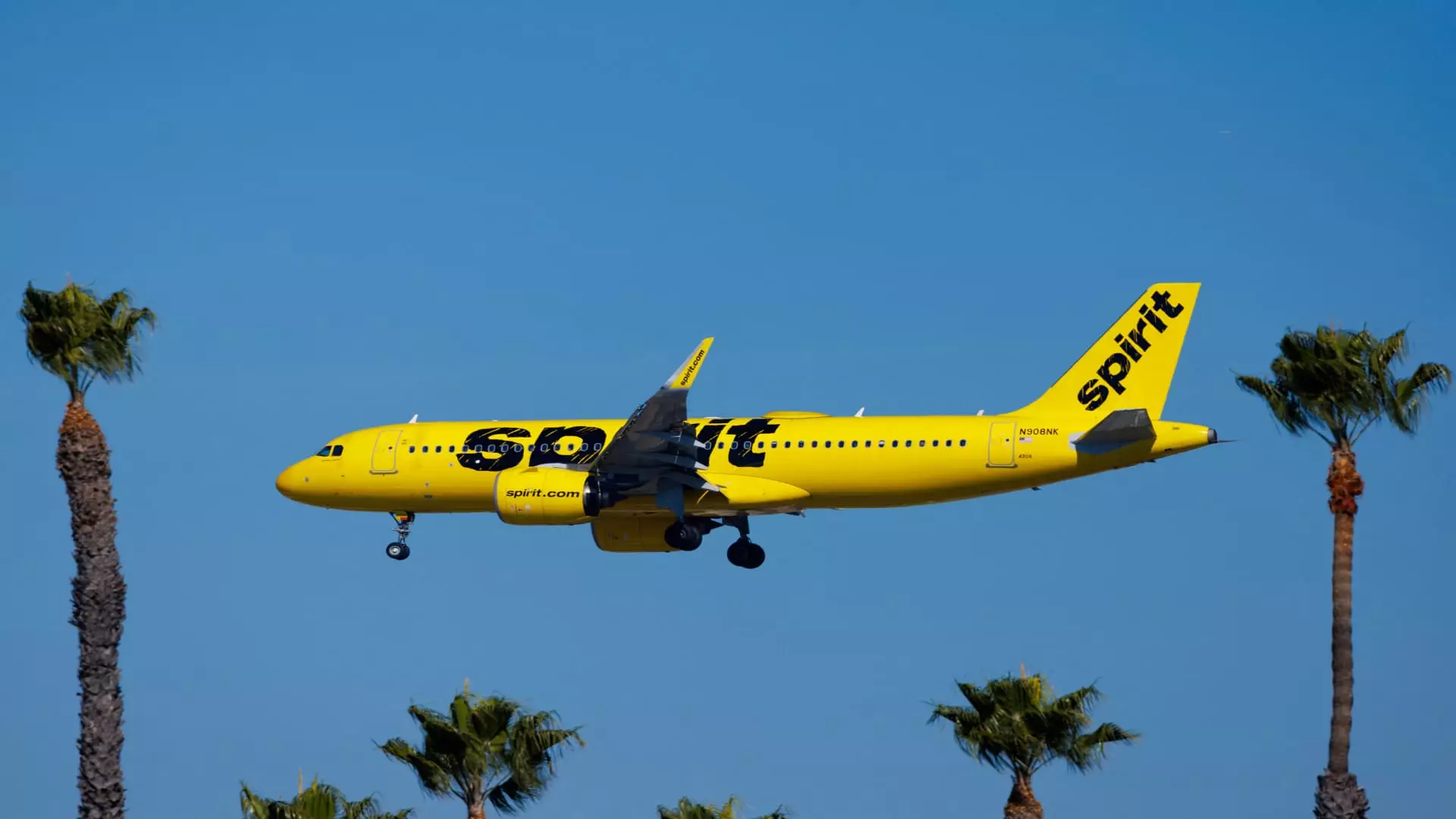Spirit Airlines, a name synonymous with budget air travel, is facing an unprecedented crisis as its stock plummeted to record lows recently. The sharp decline can be attributed to reports that the airline is actively considering Chapter 11 bankruptcy protection. This news emerged just as the airline struggles with a deadline to renegotiate over $1 billion in outstanding debt. The potential for bankruptcy represents a serious shift for an airline that once catered successfully to budget-conscious travelers, and it raises questions about the future of their business model.
Before the COVID-19 pandemic, Spirit Airlines was known for its punctual and profitable operations, alongside its notorious no-frills service model that attracted a loyal customer base. However, the pandemic disrupted air travel in ways that many carriers were ill-prepared for, and Spirit was no exception. Their business model, which previously allowed them to thrive, became a target for jokes, as the airline seemingly struggled while larger competitors thrived. Major airlines have since learned to emulate Spirit’s low-cost strategies, launching their budget-friendly fares that significantly diminished Spirit’s unique market position.
Moreover, the airline’s challenges were compounded when a federal judge blocked Spirit’s planned acquisition by JetBlue Airways on antitrust grounds early this year. This obstruction deprived Spirit of a potential lifeline that could have helped fortify its competitiveness among larger players in the industry. Instead of gaining the industry foothold that would have accompanied the merger, Spirit got left to fend for itself against the backdrop of a haphazardly evolving market landscape, complete with engine recalls and shifting consumer travel preferences.
Since 2020, Spirit Airlines has been grappling with mounting financial woes, reporting staggering losses that have only intensified over time. In the second quarter alone, the company documented a loss of nearly $193 million. The scenario is a major departure from their once-rosy financial standing, prompting operational adjustments aimed at cost reduction. The airline has had to make difficult decisions, including furloughing staff and slashing flight schedules, fundamentally reshaping its service offerings.
As part of a broader strategy to regain stability, Spirit announced reductions of approximately 17% in its capacity growth plans for the latter half of the year. This indicates a shift in focus away from expansion toward more conservative operational tactics aimed at safeguarding financial viability amid urgent discussions about refinancing obligations. Company representatives, including CEO Ted Christie, have publicly committed to securing a favorable outcome with bondholders while also seeking to enhance the airline’s competitiveness.
As Spirit Airlines stares down the barrel of Chapter 11, the question remains: what does the future hold for this once-mighty budget carrier? Analysts are keeping a close watch on the company’s next steps as they attempt to navigate these turbulent waters. The timeline leading up to the debt renegotiation deadline on October 21 will be critical not only for the airline’s operational strategies but also for instilling confidence among employees, stakeholders, and travelers.
The recent dive in Spirit’s stock price—over 24% in one day, reaching $1.69—highlights the extent of investor skepticism surrounding the airline’s capacity for recovery. This drastic decline is set against the backdrop of a nearly 90% drop in shares throughout the year. Conversely, competitors such as Frontier Airlines have seen spikes in their stock value, illustrating the contrasting fortunes within the low-cost airline sector as they reposition themselves in a marketplace increasingly crowded with similar offers.
The challenges faced by Spirit Airlines are profound, with several factors converging to put the company in jeopardy. As they undertake the fraught process of addressing their financial obligations, the industry—and potential future travelers—will keenly observe how Spirit Airlines attempts to pull itself back from the brink, looking for insights into its viability as a player in the ever-evolving domain of budget air travel.

